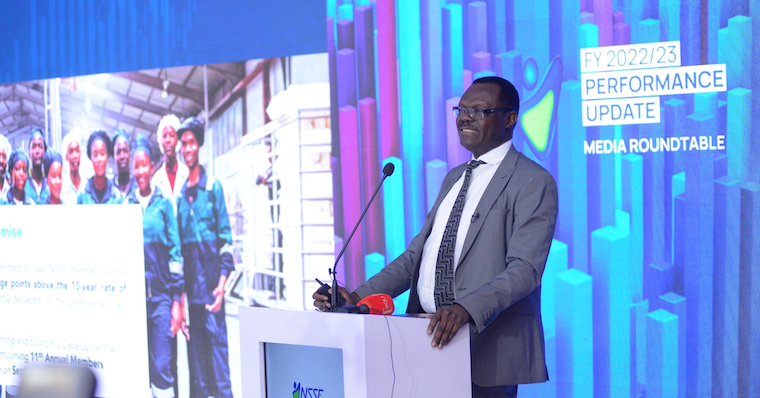When it comes to talking at great length and with growing enthusiasm about the numerous accolades collected in their trophy cabinet over the years; East Africa’s largest provident fund by asset value — National Social Security Fund Uganda [NSSF] doesn’t shy away from the spotlight.
In flamboyant fashion, the fund parades its awards for financial reporting, communication and corporate governance to the contentment of its stakeholders who are primarily the workforce. NSSF’s accomplishments are usually backed by figures to validate the awards such as its total assets valued at UGX. 18.56 trillion [$4.9 billion] as of June 30, 2023.
New members recruited since 2022 who are counted at 180,802 for the 2023 financial year [FY] and increases in fully paid benefits to members. However true that may be, a lot of information about the fund that paints a holistic picture is lost in translation since it’s buried deep in their financial reports where only a keen eye can ferret out.
The information in question is important because it points to NSSF’s money, and how it’s managed; and signals whether the fund’s money is regressing, stunted, or growing. In that way, the stakeholders can hold the fund accountable, thereby guaranteeing its efficiency.
There are several bits of information buried in NSSF’s financial reports that sound the alarm on its financial health and spell danger ahead if changes are not made. These red flags should be of keen interest to the workforce who are the backbone of the fund. Of greatest importance is the foreign exchange loss the fund incurred in the fiscal year of 2023 amounting to UGX 1.05 trillion [$282.5 million] up from UGX. 13.63 billion [$3.6 million] the previous year.
This loss was a consequence of the Kenya shilling dropping in value against the Uganda shilling by more than 22.22% percent, the fund’s annual report for FY 2023 asserts. NSSF is heavily invested in Kenya, posting up UGX. 583 billion [$156.8 million] in Kenyan treasury bills and equities during the 2023 financial year alone.
Add that to the negative 34.48 percent performance of Nairobi Securities Exchange when translated to Uganda shillings where NSSF is invested in a dozen companies. Some of the companies that the fund has invested in, in the Kenyan bourse are Absa bank Kenya, Safaricom, NCBA bank, Cooperative Bank Kenya and Diamond trust bank to cite a few. This investment has resulted in the loss of UGX 105.2 billion [$28.3 million] in equities in the FY 2023 for the fund, and a dip in returns from fixed income from 15.1 percent in 2022 to 10.45 per- cent in 2023.
The losses in investment from Kenya are bound to get larger with financial challenges worsening because of the re- cent widespread protests opposing the Finance Bill 2024 which aimed to create revenue streams for the government to pay its debts. In this scenario, the liquidity risk of the fund from its Kenyan investments is heightened because returns are most likely not going to be availed at the right time.
NSSF needs them to honor its obligations like mid-term payments. This is going to disrupt the flow of work within the fund. Interestingly, Kenya’s provident fund — NSSF does not return the favor because its last released annual report in FY 2020/21 disclosed that the fund only had interests in two Ugandan companies. That is, Umeme Limited through the Nairobi Securities Exchange, and Stanbic bank Uganda on Uganda Securities Exchange.

